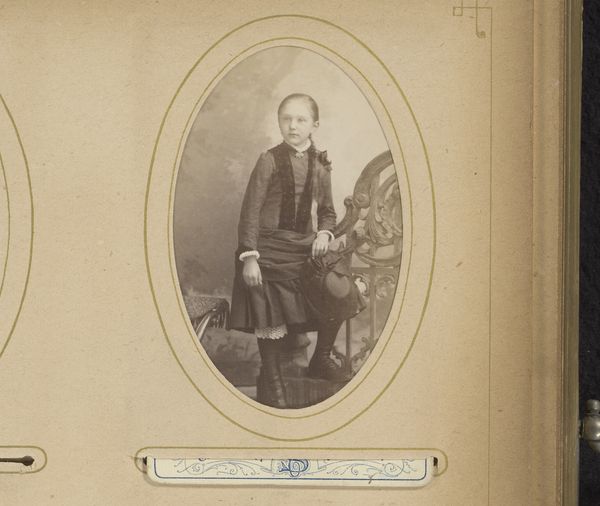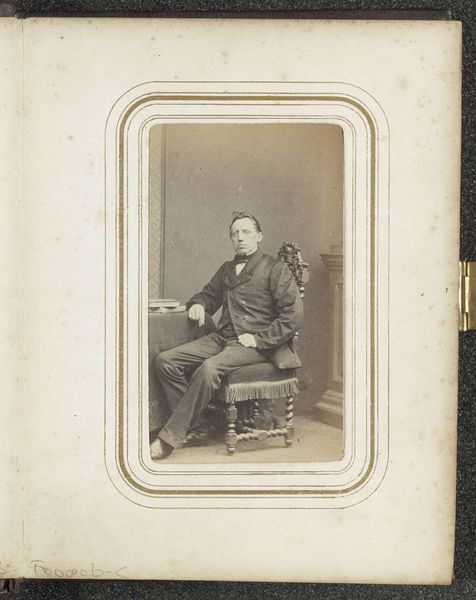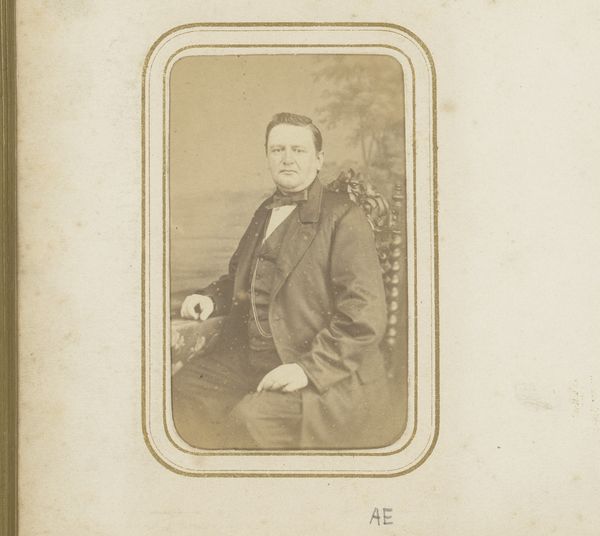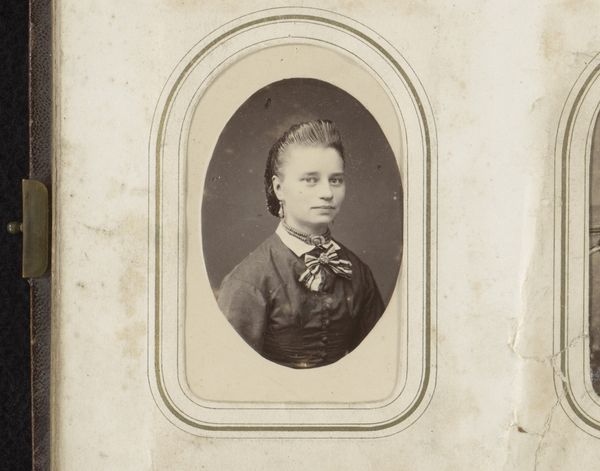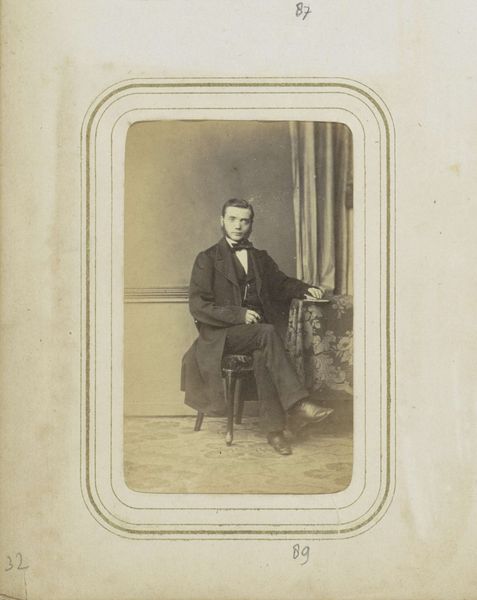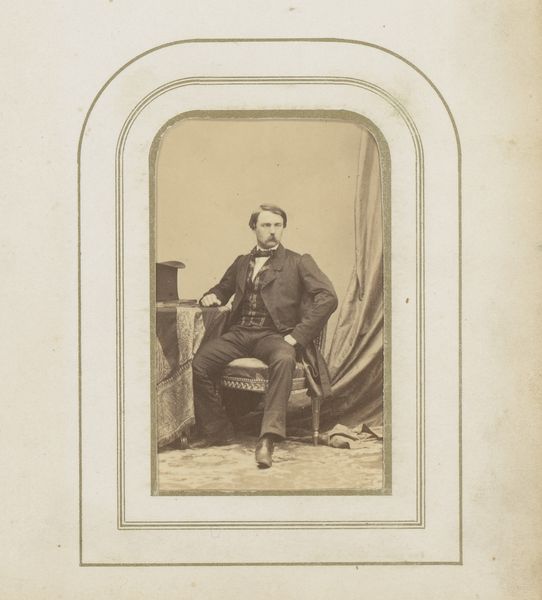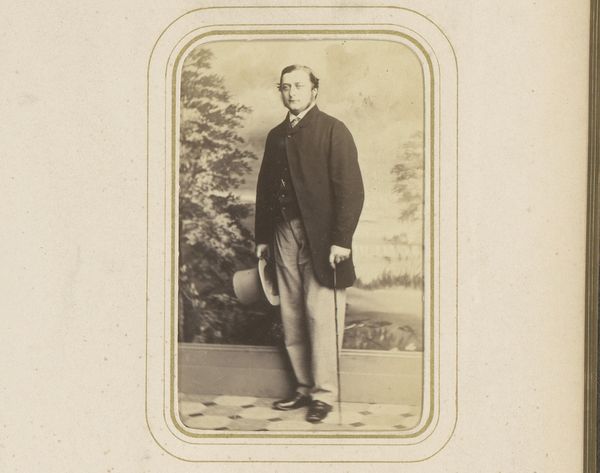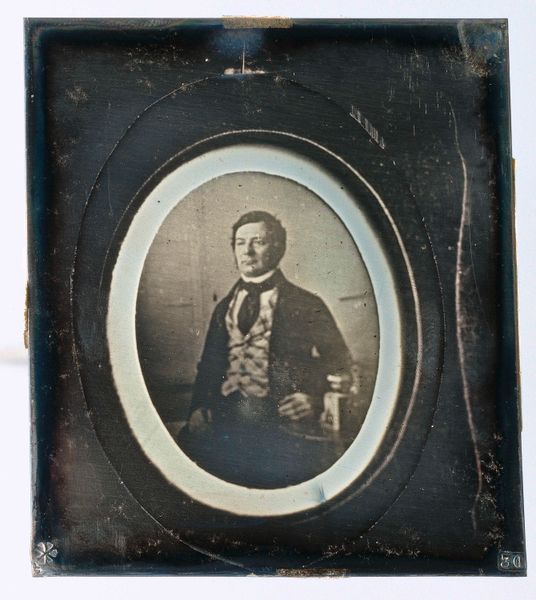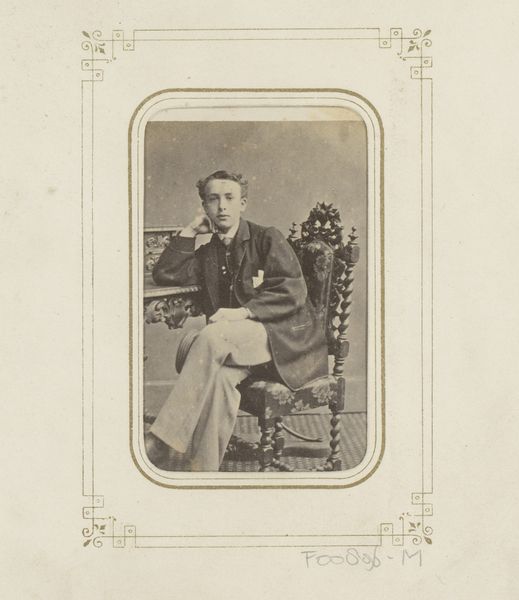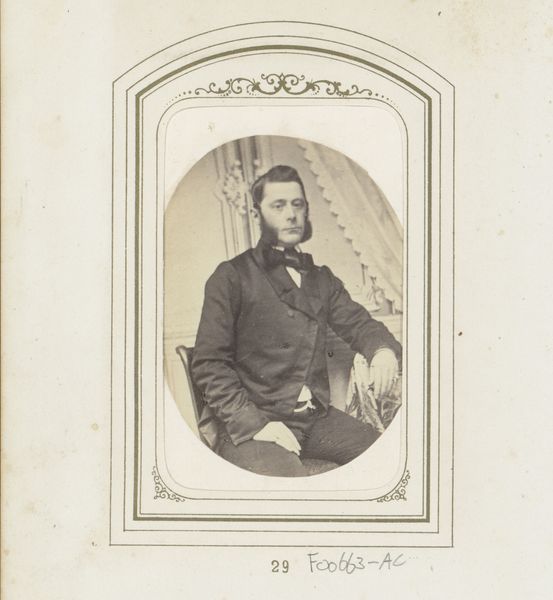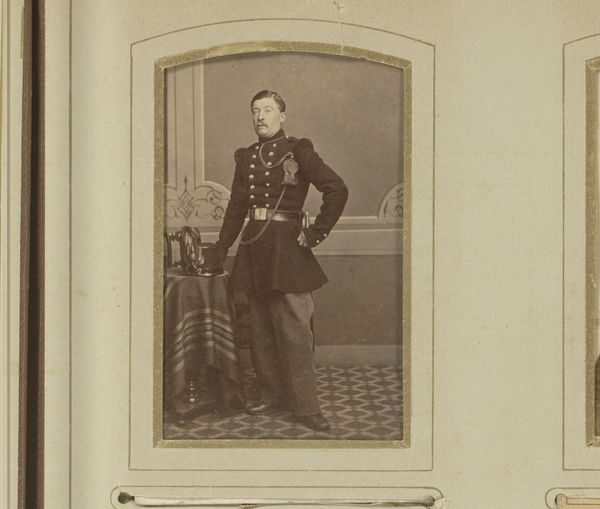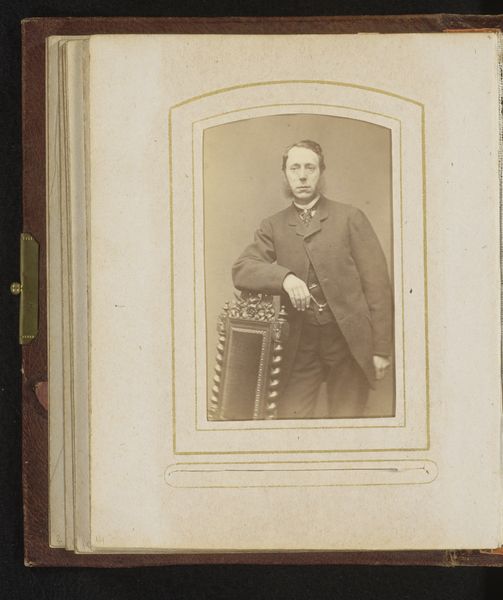
daguerreotype, photography, albumen-print
#
portrait
#
self-portrait
#
daguerreotype
#
charcoal art
#
photography
#
classicism
#
romanticism
#
albumen-print
Dimensions: height 115 mm, width 92 mm, height 93 mm, width 70 mm, height 149 mm, width 121 mm, thickness 4 mm
Copyright: Rijks Museum: Open Domain
Editor: This is "Portret van Paul Cesar Lagache," a daguerreotype from 1843. There's something quite striking about the textures and the contrast between light and shadow. How do you interpret this work? Curator: The image strikes me as a fascinating example of early photographic portraiture, rendered through the precise materiality of the daguerreotype process. Note the sharp definition afforded by the medium; observe how that lends the subject a pronounced sense of presence, despite the evident constraints of posing for such an early form of photography. Editor: The framing also seems quite deliberate. The oval shape draws your eye to the subject's face and the contrasting blacks and whites, creating depth within the confines of that shape. Do you see the framing playing a bigger part in the composition? Curator: Precisely. The oval vignette acts as a pictorial frame, isolating and thus foregrounding the sitter's likeness. This concentrated presentation compels the viewer to consider the visual properties of the subject’s presentation. Moreover, the shallow depth of field inherent in early photographic lenses, serves to flatten the background and reinforce the dominance of the figure. It forces the eye onto the tonal range across his form and garments. Editor: That makes sense, given photography was quite novel then. I suppose it had to be the center of attention. Curator: The visual clarity enabled the emergence of the subject’s person through tonal arrangement, and also the presentation. Do you perceive his expression, along with other formal elements such as his clothes, working in conjunction, contributing to a statement or message? Editor: Definitely. The plaid material and the carefully placed garments show sophistication, almost aristocracy. It contrasts with the rougher photography style of the era. It’s a neat conflict that creates its impact. I really appreciate your formal breakdown; it gives me so much to think about when viewing art. Curator: Indeed, appreciating these subtle visual tensions rewards prolonged and detailed analysis. This object highlights photography as an act, a careful composition rather than merely a representation.
Comments
No comments
Be the first to comment and join the conversation on the ultimate creative platform.
